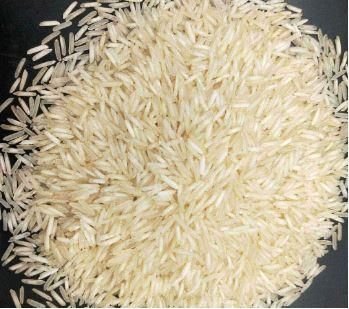
Pakistan exports one of the finest qualities of 1121 Long Basmati Rice. 1121 has special value. Pakistani 1121 long basmati rice is known for its delicate flavour, aromatic fragrance, and long, slender grains. In this post, we’ll discuss story of rice, Nutritional facts, benefits, history, and export.
How to produce 1121 Long Basmati Rice?
To meet the international standard, supreme quality 1121 basmati rice is produced that involves cultivation to milling, beginning with the cultivation process in fertile regions or provinces of Pakistan, such as Punjab and Sindh. Farmers focus on grains as their size doubles when cooked. The process is based on harvesting, hulling to remove the bran and preserve aroma, texture, nutrients, and the final step is polishing, which creates a refined product. Trained professionals suggest protection methods.
The World’s Longest and Most Tasty Grain
1121 long grain rice is exceptional due to its length, texture, and taste. The most important thing is its length which reach to 8.5 mm to 9 mm. Due to delicious taste, fluffy and slender shape it is perfect choice for mega stores, super start restaurants, and global buyer. This rice is used in catering industry and hospitality for popular dishes like Biryani as it maintains its taste when cooked in huge quantity. In Europe it is imported for both local and international purpose.
What Makes 1121 Basmati Rice Unique?
Due to modern farming techniques in Pakistan, 1121 Basmati long grain rice is famous for its 8.4 mm length when cooked. Saremco Agri Commodities export this long grain rice to the world, if you want to order then it is available according to your requirements. Our commitment is to fulfill the high standards. We are proud to provide unmatched quality and export best quality 1121 long grain rice, promising our delightful experience.
Features and Characteristics of 1121 White Basmati Rice
Polishing Grade Silky Polished & Color Sortexed
Damaged, Shriveled & Yellow 1.0% Max
Chalky Grains 0% Max.
Contrasting Varieties 7.0% Max
Foreign Grains 0.1% Max.
Foreign Matter 0.1% Max
Paddy Grain 0.2% Max
Under-milled & Red-striped 2.0% Max
Milling Grades Available Brown/White/Sella 1121 Long grain Rice
Properties:
It is unique because of
- Long and elegantly thin
- Delectable tastes
- Non-sticky texture after cooking
- Fragrant aroma
Nutrient Value:
- High carbohydrate content
- Starch
- Rich in vitamins
- Provides energy
The Eco-Friendly Appeal of 1121 Long grain rice
In 2024-2025, buyers have changed their attention towards products that are ethically produced and sustainably sourced. In Pakistan, farms have produced and maintained eco-friendly sites, merging them with the latest farming techniques. People use fewer pesticides and fertilizers, which makes it a perfect choice for consumers who want to use organic food. This rice is available on the international market and is highly sought after.
Global Demand and Export
Pakistan exports 1121 long grain rice in the international market, especially to North America, Europe, and the Middle East. It is perfect to make biryani, pulao, Chinese fried rice, and sweet dishes like kheer. Pakistani rice has the best results from the market, and its demand is increasing day by day. The 1121 long grain rice is important in international trade. Due to its supreme quality, it becomes popular option for international buyer.
Powerhouse of Rice in Pakistan
Pakistan produces 70% of rice and has become the largest producer and exporter of rice. The success is possible due to skilled farmers and a fertile region. Pakistan possesses the best things in the world, so it is why Pakistani 1121 long grain rice is in high demand.
1121 Rice Varieties
- 1121 Steam Rice
- 1121 Sella Rice
- 1121Rice
- 1121 Golden Sella Rice
Cooking Tips for 1121 Basmati Rice
To get good output, there are some simple cooking steps you must follow:
- Before cooking, you must rinse the rice to remove starch from it. Its process contributes a lot to making soft grains once cooked. It also improves the taste and texture of rice.
- The most important step is the water ratio: For better output, you need to check how much water you are adding to it because each grain must be cooked well.
3. You should know when to increase or decrease heat level.

Muhammad Arif CEO, MBA in Finance and Marketing from South Korea University. 15 years plus experience in Agriculture Waste and Animal Feed Production, Facility Management & Export


